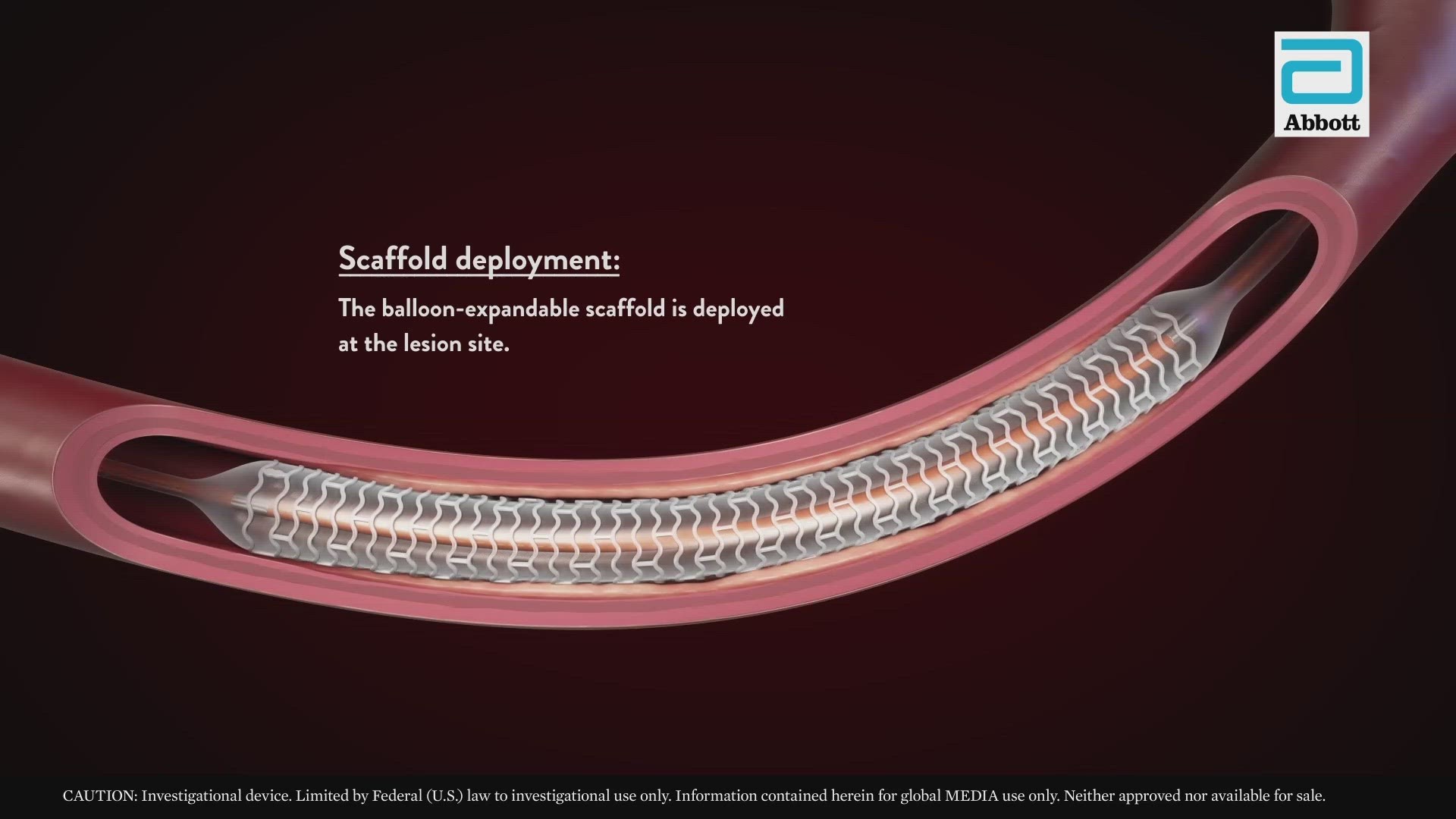CLEVELAND — One in 20 Americans over age 50 has Peripheral Arterial Disease, or P.A.D.
Not only does it raise the risk of heart attack and stroke, it can also lead to leg amputation.
It happens when the artery in the leg gets clogged with plaque. Currently treatment is angioplasty, using a balloon to press the plaque to the walls of the arteries. While it works well in the thigh, it's not so great below the knee.
"When you do angioplasty as soon as you take the balloon down and remove it, you get significant recoil and the blockage comes back," said Mehdi Shishebor, D.O., President of University Hospitals Cleveland Harrington Heart and Vascular Institute.
Abbott created the dissolvable stent nearly two decades ago. Made of a bio-absorbable polymer that disappears over time. It's been tested in the legs of more than two hundred patients.
"And the trial showed that the stent did exactly what we wanted it to do," Dr. Shishebor said.
He presented the findings today in San Francisco at the Transcatheter Cardiovascular Therapeutics (TCT) conference. It's the Cardiovascular Research Foundation's (CRF) annual scientific symposium and the world's foremost educational forum specializing in interventional cardiovascular medicine.
The study findings were also published in the New England Journal of Medicine. Read the study below.
Usually stents are permanent, but that can have potential problems.
"Stents can have complications, they can fracture or they also can form scar tissue inside of them which makes them more difficult to deal with," Dr. Shishebor said.
Like internal stitches, the device desolves usually in a year or two, which may help if the patient gets another clogged artery.
"What would be nice with this device if the patient does come back the stent is gone so it's like starting from scratch," Dr. Shishebor said.
Research findings are being sent to the FDA.
"Usually takes about three to six months and we're keeping our fingers crossed that this will be the second device that we are involved with that will be approved to prevent amputations," Dr. Shishebor said.
The first device approved for lower leg blocked arteries is the LimFlow. It was just approved last month but it's only for patients who have no other options available.
The disappearing stent may be a better option because angioplasty is not always successful in below the knee blockages.
Abbott had a disappearing heart stent on the market several years ago, but Dr. Shishebor says the company pulled it when it was discovered it was not as cost effective as hoped, and there were so many other heart stents available.
This stent, and it's ability to disolve, may help people avoid the complications that come from PAD and impact up to 12 million Americans.
Those with PAD have six times the risk of coronary artery disease, heart attack or stroke and a third of people have a chance of not surviving five years after diagnosis.
- Smokers
- Over age 50
- Diabetes
- High Blood Pressure
- High Cholesterol
- Obese
- History of Heart Disease
- History of vascular disease
African Americans have twice the risk of PAD and up to 90% of women have no symptoms or don't recognize symptoms. Women with PAD have four times the risk of heart attack.
Symptoms of PAD often include wounds that won't heal and cramps and pain in legs while walking or exercising. Left untreated, PAD can lead to amputation.

